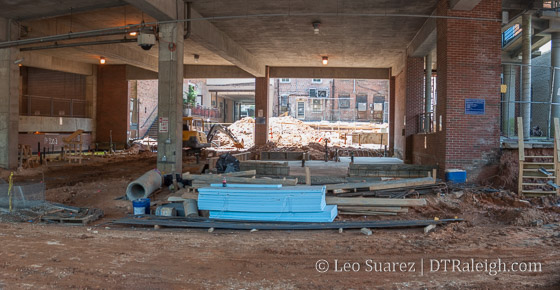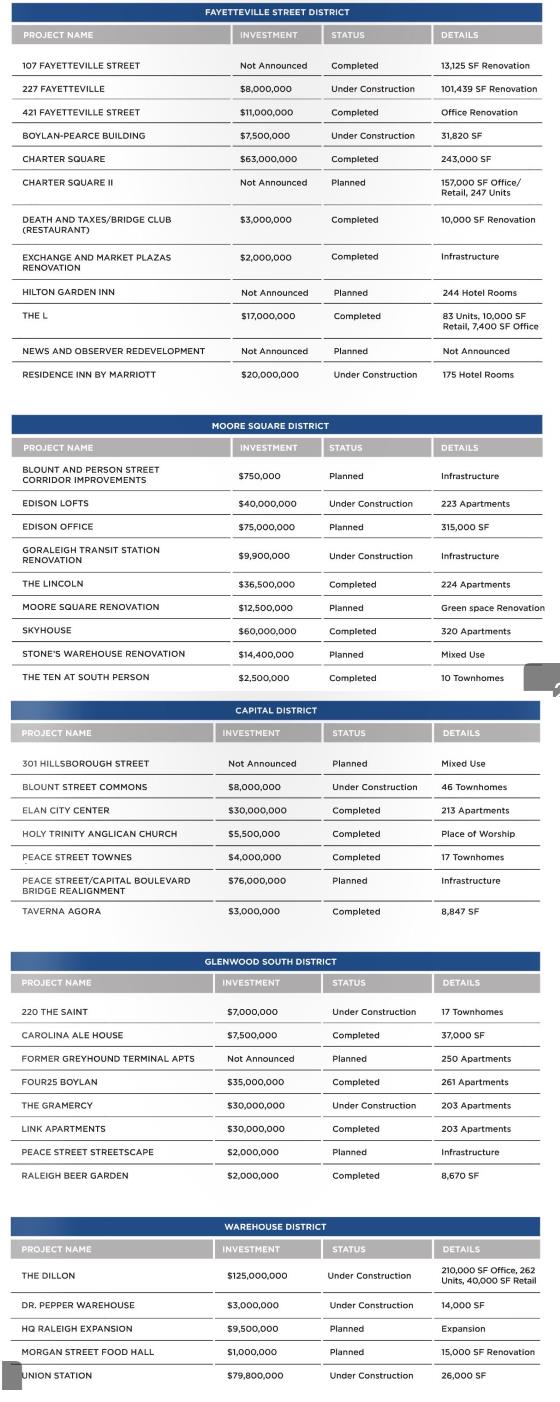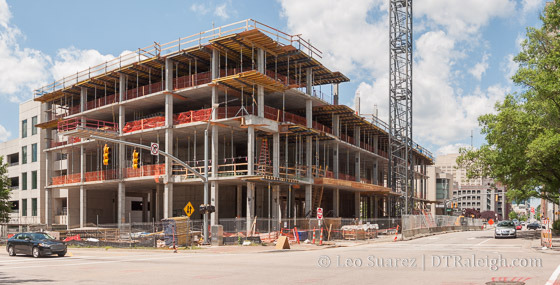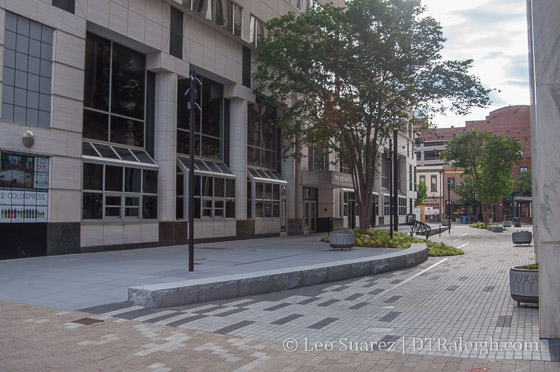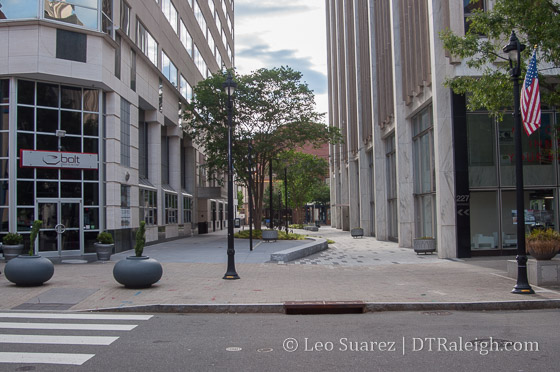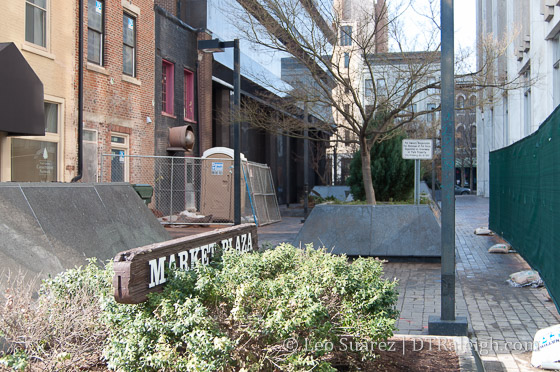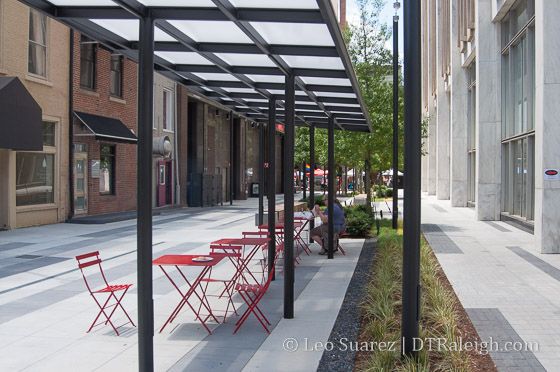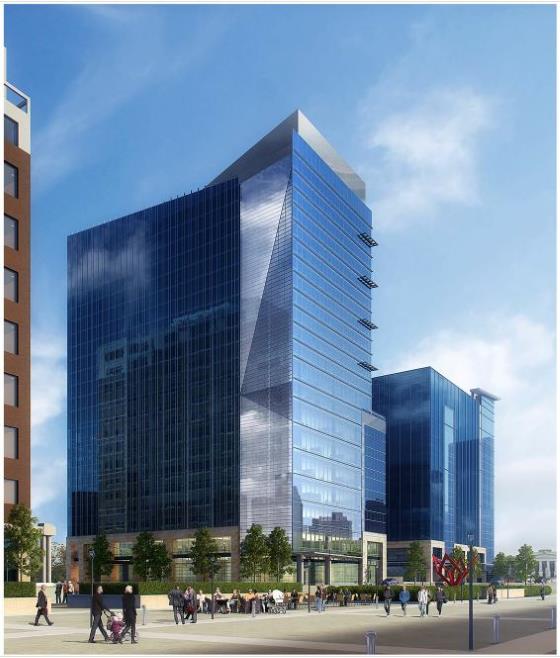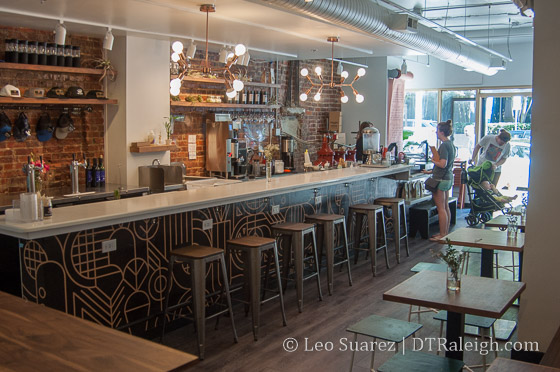
Raleigh Raw on West Hargett Street
I’m excited to share a new addition to my seasonal updates. Leading up to each restaurant roundup, there is extensive note taking going on behind the scenes. Now, my notes are yours!
You should already be familiar with the DT Eats page but now I have DT Tips. The page tries to consolidate every upcoming, talked about, and gossiped item out there when it comes to eating and drinking in downtown Raleigh.
You can dive into the Tips list here. A few more tweaks are in the works but it’s basically ready to share at this point.
Now that that is out of the way, let’s dive into our latest updates.
- Starting in the Warehouse District, the former Brewmaster’s space at the corner of Martin and Dawson Street will become Parkside, a southern farm-to-fork restaurant.
- There’s progress being made at Whiskey Kitchen.
- Mentioned back in March, the Hibernian Company wants to open a food and market hall in a warehouse along West Street. (former Buckhead Saloon, former former Jillian’s space)
- The upcoming brewpub Oak and Dagger, located in the former Tyler’s space at Seaboard Station, has opened their bottle shop. The pub is still being worked on but they are brewing their own beer now. You can follow their progress on their Facebook page.
- Brewerks Cafe and Bakery is coming to the former home of Quality Grocery in the Oakwood neighborhood.
- Pelagic Beer and Wine is planning to move a few doors down to the corner of Pace and Person Street.
- Provenance is now open in the Skyhouse Raleigh tower.
- According to eatRaleigh, the house at the corner of Person and Hargett will become The House, a bar and bottle shop with some bar food.
- Progress continues on Dram and Draught, the pub in the former gas station at Hillsborough and Boylan. You can follow the progress on their Facebook page.
- Hadley’s is now open in the former home of The Borough in the Dawson building.
- In Glenwood South, Harry’s Guitar Shop will become 616 Glenwood, a night club owned by Dan Lovenheim who also owns a few other bars on the street.
- Along Peace Street, the former Mr. Pizza and Salad is now TLC Wings and Grill. This is the second location after first opening in Pineville, NC.
- Mentioned in a post about West Street, The Cardinal will be a bar and lounge on North West Street.
- The former home of Duel Lounge in the Creamery Building is now The Milkbar.
- Blue Mango has changed their name to Indio.
- Raleigh Roadhouse, a live music and barbecue restaurant, has opened in the 510 Glenwood building.
- Since our last restaurant roundup, the 222 Glenwood building has seen a lot of action. The space where Bruegger’s Bagels used to be was turned into International Breakfast and Burger by the owner of next-door Sushi O. That only lasted a few weeks. In what seemed like no time at all, the place reopened into China O, an authentic Szechuan and Chinese restaurant.
- Tobacco Road Sports Cafe is relocating to the Raleigh Electric Powerhouse, where Natty Greene’s used to be, on Jones Street.
- On Fayetteville Street, the former home of Zinda in the PNC Plaza is going to be a new concept from Eschelon Experiences. Bare Bones will have a menu of comfort foods like house-ground burgers and ribs. They will also throw in some beer, pool tables, and shuffleboard.
- The TBJ has a first look into Living Kitchen, the raw and organic restaurant being worked on in Charter Square.
- Also in Charter Square, the b.good is now open.
- Carroll’s Kitchen will be opening in the former Square Rabbit space at the corner of Martin and Wilmington Streets. The non-profit restaurant has a mission to help homeless women, “empowering them with job training, life skills, and even housing,” their website says. It’s a great cause and they are always looking for volunteers.
- Isaac Hunter’s Tavern is back on Fayetteville Street, this time at 414 Fayetteville where Common 414 used to be.
- The Twisted Mango in the Progress Energy building has closed and changed over to San Lorenzo Bistro and Bar.
- Raleigh Raw (pictured above) has opened their juice bar and cafe on Hargett Street.
- Local Icon Hospitality has opened their latest spot, Virgil’s Original Taqueria, on Salisbury Street.

